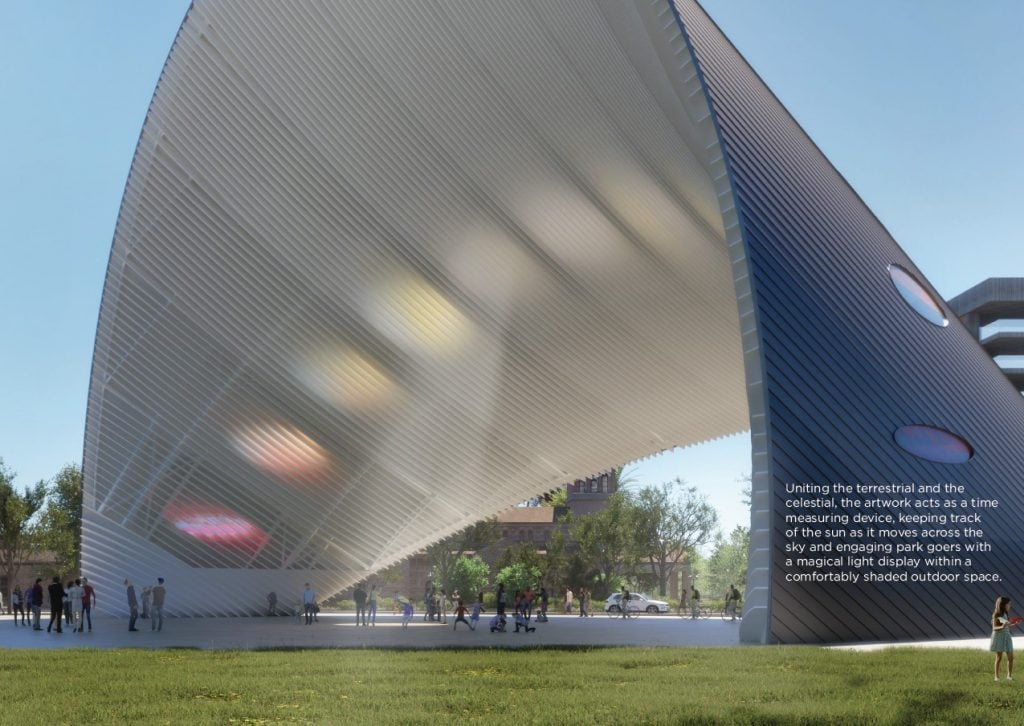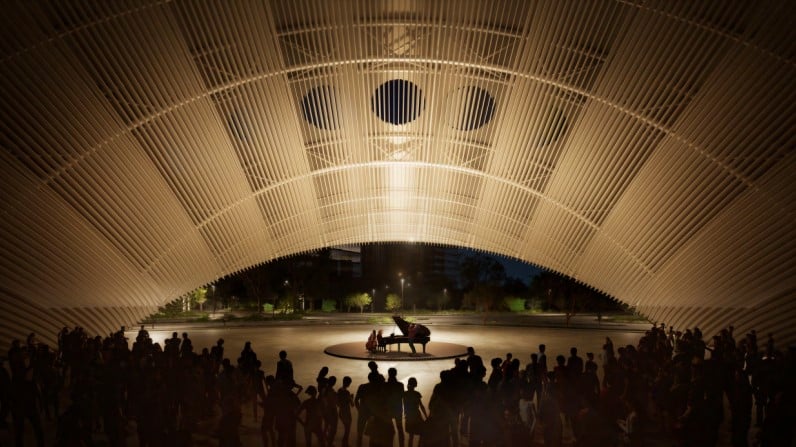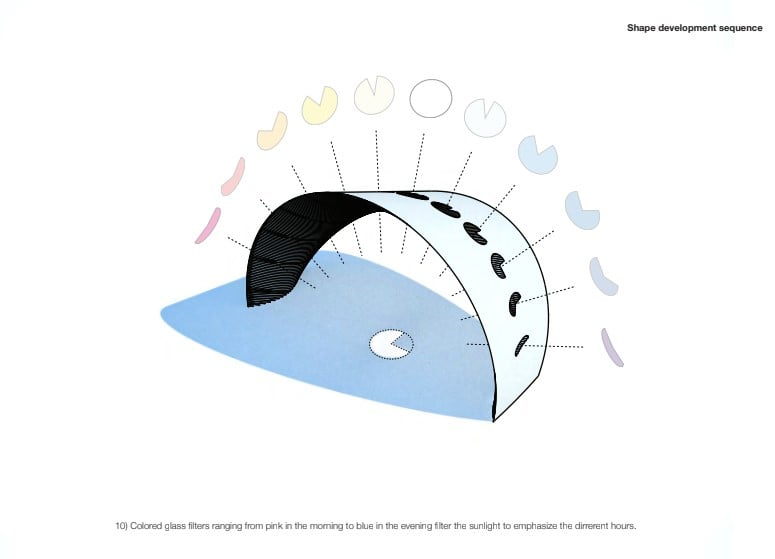Art World
Houston Will Soon Be Home to a High-Tech, Clean-Energy Public Artwork That Will Generate Electricity for Its Neighborhood
The sculpture, dubbed the Arch of Time, has been designed by German architect Riccardo Mariano.

The sculpture, dubbed the Arch of Time, has been designed by German architect Riccardo Mariano.

Adam Schrader

A new public artwork called the Arco del Tiempo, or Arch of Time, will generate clean energy for Texans still rebuilding from the devastation caused by Hurricane Harvey in 2017.
City officials in Houston have accepted a proposal from German architect Riccardo Mariano for the massive, futuristic installation developed with the Land Art Generator, a nonprofit that seeks to advance renewable energy-focused public art.
Mariano said he expects the arch, when completed, to be covered in solar panels that will generate 400 megawatt-hours of electricity per year—about what 40 Texan homes consume.
The energy produced will first go to the Talento Bilingue de Houston, a bilingual English-Spanish theater in the East End near the Guadalupe Plaza Park where the public artwork will be placed.
“That institution, which is very important to Houston, will have no energy bill at all,” Robert Ferry, the co-director of Land Art Generator, told Artnet News. He added that any additional energy will first go to lights and other services in the park with anything remaining to the city of Houston. The team did not provide a timeline for the sculpture’s completion.

A rendering of a concert underneath the Arch of Time. Photo courtesy of Riccardo Mariano.
The creation of the Arco del Tiempo comes as Houston officials seek to connect Guadalupe Plaza Park, renovated in 2016, and the Buffalo Bayou Park, created in 2015. Though both parks were completed before Hurricane Harvey, officials are using park designs to combat floodwaters.
“The mayor and city had already done extensive community engagement and they asked for public art and the symbol of an arch came up in their engagement,” Ferry said. “The city is really invested in building up the east end and avoiding the pitfalls of development and investing in the east Buffalo Bayou. Riccardo’s work is kind of a gateway to that and hit many points very well.”
Ferry said the designers expect the giant sculpture to draw “considerable new development” to the edges of the park and believe it will have a net-positive energy production within five years. The sculpture is expected to remain at the site for at least 25 years.
“It is the first public artwork in the world designed to be a net positive contribution to the climate crisis,” Mariano said in a statement.

A diagram shows how colored glass and shapes are used to tell time with the giant sundial. Photo courtesy of Riccardo Mariano
Mariano based his design on the concept of the sundial, the oldest device known to measure time.
“The sun is the source of life on Earth and that’s what I was thinking when I designed it,” he said, adding that the arch will cast light beams on the ground as if seen through a prism that vary depending on the time of the day. “It’s a very accessible and engaging art for the public.”
Mariano said that the arch’s shape is informed by its function, taking the path of the sun across the Texas sky to increase its electricity-generating efficiency. The architect tested the sundial function using a smaller scale model that Ferry described as “art in [and] of itself.”
“The shape follows the apparent path of the Sun over the course of the day and year, modified to optimize the energy production, and tapers toward sunset and sunrise so that’s really how the shape was generated. It’s a very functional shape that also becomes monumental,” he said.
He added that the sun can be “very intense” in Texas so it also provides shade and allows people to spend time outside.
The arch could be seen as a triumph for the city of Houston but Mariano resented any connection to triumphal arches like the Arc du Triomphe in Paris or the arch in New York City’s Washington Square Park.
“There is not a relation to triumphal arches and I would not want to have that connection because those were typically erected after winning wars,” he said.
“I would think more about the Pantheon, which has arches that illuminate different parts of the building depending on the time of the year. That’s an inspiration.”
More Trending Stories:
A Norwegian Dad Hiking With His Family Discovered a Rock Face Covered With Bronze Age Paintings
An Israeli First-Grader Stumbled on a 3,500-Year-Old Egyptian Amulet on a School Trip